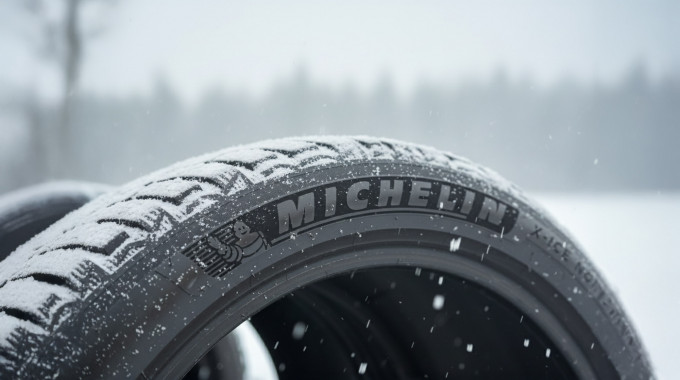
7 Steps for Making the Most of Your Test Drive
Shopping for vehicles can be an exhilarating experience but for many, it can be anxiety-provoking. To put your mind at ease before making a major purchase, it makes sense to try before you buy, doesn’t it?
According to an Autotrader consumer survey, two thirds of car buyers find it ‘very important’ to take a test drive when buying a car.
With regard to buying a brand new car, getting a feel for how it performs and handles is part of the experience. Getting comfortable in the driver’s seat, trying out the tech features, and testing visibility are important checks to help you determine if you’ve found the right car.
But for a used car, you also want to be sure that it not only feels right for you, but that it doesn’t have any underlying issues. The used car market is a fantastic place to find a great deal, but since the car isn’t new, there could be some wear and tear if the previous owner didn’t look after it well. This is especially true if you plan to buy from a private seller (instead of a dealership) due to the fact that a private seller does not typically have maintenance expertise or an online reputation to maintain.
If you’re thinking about organizing a test drive, here are 7 things you should keep in mind to make the most of it.
How to Test Drive a Car (7 Steps)
1. Research a test drive route
Before arriving at the dealership, plan a route to try out the car you’re interested in buying. What you want are varying types of roads depending on the vehicle you want to buy.
If you’re test-driving a vehicle that’s going to be your daily commuter, find a combination of smooth roads and rough asphalt. Identify a nearby area where you can reach highway speeds. A bit of stop-and-go traffic can help you test the acceleration and brakes.
If this isn’t an everyday driver – a 4x4 that you'll be using for off-roading, for example – your options may be limited. Try to locate a route not too far from the dealership where you can put the vehicle through its paces to make it sure it’s fit for the intended purpose.
2. Position your seat, mirrors, and pedals before you start
If you’ve ever taken a test drive but haven’t felt confident in the driver’s seat, this tip is for you. Take the time to adjust before venturing out onto the road.
- Adjust the driver’s seat so you can comfortably see over the steering wheel and reach the pedals.
- Move your rear-view and side-view mirrors to see well behind and beside the car.
- If the car is equipped with power-adjustable pedals or a telescopic steering wheel, ensure it’s all adjusted as you would if you owned the car.
- Familiarize yourself with the controls like turn signals and wipers so you can activate them as needed on the test drive.
Don’t worry about the time it takes to make the adjustments. When you’re positioned comfortably, you can focus on driving and on how the car handles rather than not being able to see or reach something.
3. Drivers, start your engines!
Let’s get the fun started. Start the engine and pay attention to a few things:
- Is it cranking strong? If the engine turns over slowly, it could be a sign of a weak battery.
- Did the engine fire up right away? It shouldn’t take more than a second or two for the engine to fire up. It can be a sign of an issue if it takes longer or it runs rough when started.
4. Idle a while
Let the engine run for a bit before you start moving. While the engine is coming up to temperature, there are a few things to pay attention to inside the car.
- Look for any warning lights illuminated on the dashboard. If there are any amber or red warning lights, that may be a red flag that an issue is present.
- Pick your radio station or connect your device. While the engine is idling, browsing the infotainment settings and options can help you understand what entertainment features the vehicle offers and how easy it is to operate.
- Choose your HVAC settings. Setting the heat or air conditioning before you go will help you identify any AC problems and also ensure a comfortable drive without distraction.
Make note of any issues you come across. If you decide this is the car you want, make sure the seller addresses them before the vehicle changes hands.
5. Time to drive
The time has finally come to hit the road. You’ve already become familiar with the features, so the test drive is all about performance, handling, and identifying problems. Your test drive route should have a stretch of highway, ideally with a speed limit of 90 km/h or higher. Now’s your chance to gauge if the vehicle has the performance you want. Hit the accelerator to bring your car up to the posted limit.
When you’re driving, pay attention to the steering wheel. Is it vibrating or pulling to one side when you’re holding it straight? This can be an indication of a steering or suspension issue, an alignment concern, or maybe low tire pressure.
When you brake, listen for squeals or grinding. If you feel a shimmy or vibration in the steering wheel, there could be braking or tire issues. Make sure the seller addresses the issue or you can leverage it to negotiate a cheaper price.
6. Take a city route
While driving on the highway can be fun and easy, a test drive on city streets will give you the best feedback.
- Make a series of left and right turns, feeling for binding in the steering and listening for clunking or rattling noises. Any noises or difficulty turning could indicate a steering system problem.
- Find potholes and speed bumps you can drive over slowly. These obstacles will test your suspension. Again, clunking or rattling noises should be noted as well as any excessive or uneven bouncing.
- If an empty parking lot is available, perform a slow-speed figure-eight manoeuvre. This tests the steering and suspension, even at their extreme ranges.
- Try the car in stop-and-go traffic. See how responsive the car is when you accelerate. Get a feel for how it brakes with varied hard and soft applications.
Avoiding peak traffic times will help ensure that you enjoy more freedom to execute your desired manoeuvres. It will also ensure that you don’t spend your test drive time slot stuck in rush hour traffic.
7. Check underneath
When you get back to the dealership, look underneath the car using the flashlight on your smartphone. Aside from clean water that may drip from the HVAC tube or a muffler drain hole, you shouldn’t see any leaks.
Get pre-approved before you shop...
A test drive is an important stage in the car-buying journey as it lets you test the comfort and reliability of a vehicle. The last thing you want to take ownership of is a lemon.
But before you even step foot into a dealership we recommend getting pre-approved for your car loan. With a pre-approval you can shop with confidence knowing exactly what you can afford, and what vehicles you should be considering for a test drive.
With Canada Drives you can get pre-approved online in minutes. It's by far the easiest way to buy a car in Canada!







